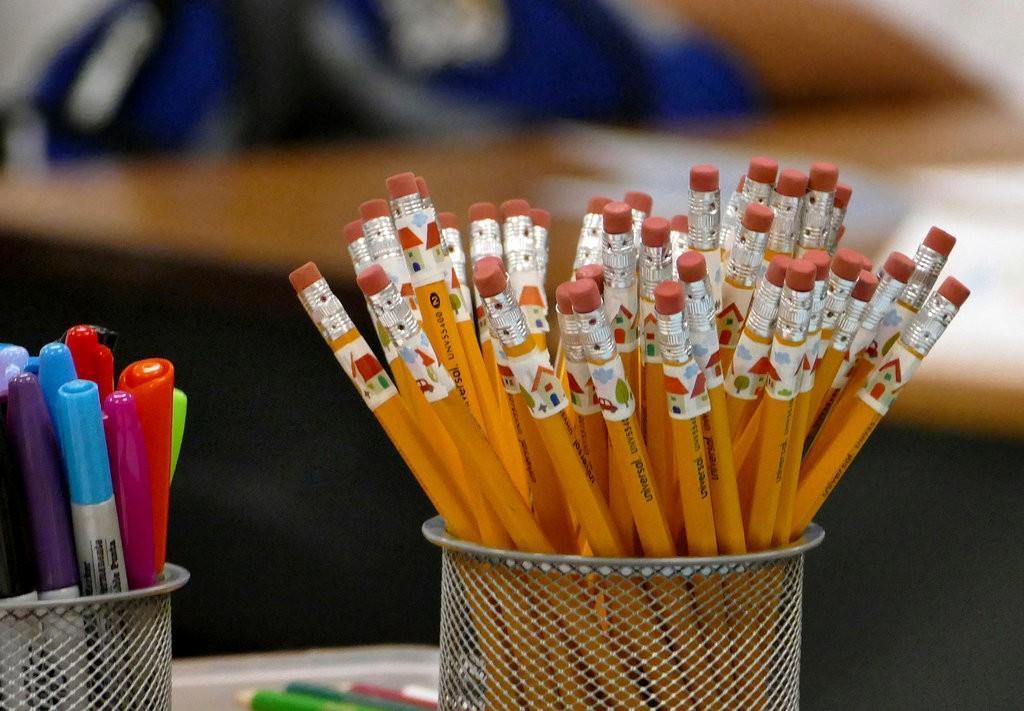More than 90% of US teachers spend their own money on school supplies, survey finds
'I didn't want to deprive my kids, so I went on Amazon'

Your support helps us to tell the story
From reproductive rights to climate change to Big Tech, The Independent is on the ground when the story is developing. Whether it's investigating the financials of Elon Musk's pro-Trump PAC or producing our latest documentary, 'The A Word', which shines a light on the American women fighting for reproductive rights, we know how important it is to parse out the facts from the messaging.
At such a critical moment in US history, we need reporters on the ground. Your donation allows us to keep sending journalists to speak to both sides of the story.
The Independent is trusted by Americans across the entire political spectrum. And unlike many other quality news outlets, we choose not to lock Americans out of our reporting and analysis with paywalls. We believe quality journalism should be available to everyone, paid for by those who can afford it.
Your support makes all the difference.Andy Yung, a nursery teacher in Queens, New York City, is adept at raising money online for ambitious classroom projects, but even he sometimes pays for supplies out of pocket. And he has company.
According to a US federal Department of Education survey released on Tuesday, 94 per cent of public school teachers in the United States reported paying for supplies without reimbursement in the school year that straddled 2014 and 2015.
It made little difference whether they taught in cities, suburbs or rural areas, or whether or not their students were poor — virtually every public school teacher said they had used their own money for their classrooms.
“It’s almost expected, especially in the summer months creeping up into September,” Mr. Yung said. “It’s just something we kind of naturally do."
The teachers who reported spending their own money on supplies shelled out $479 (£406) each on average, according to the survey. Seven percent reported spending more than $1,000.
The findings, based on a nationally representative sample of tens of thousands of teachers, underscore the demands teachers across the country have been making in recent months amid protests over stagnant pay and underfunding.
The latest took place on Wednesday in North Carolina, where some schools cancelled classes as throngs of teachers and others marched in the capital. Similar rallies have been held this year in Arizona, Kentucky, Oklahoma and West Virginia.
The protesters have been successful at extracting concessions from conservative lawmakers, though the deals have not always fully met their demands.
On average, public school teachers earned just under $60,000 (£50,862) last school year, according to the National Education Association, but pay is so low in some areas that officials have been recruiting overseas.
Limited budgets and red tape have led some teachers to seek outside funds for classroom projects. Like Mr. Yung, some of them use DonorsChoose.org, a crowdfunding website where educators can solicit donations for supplies, trips, and other projects.
In March, he raised almost $3,000 for materials to teach his students about insects. The project was a hit, but the children wanted to see live bugs, too.
The cost of the additional materials was less than the DonorsChoose.org $100 (£85) minimum and Mr. Yung had already reached a city reimbursement limit, so he spent his own money to buy two more books, an ant farm and caterpillars.
“I don’t want to deprive my kids of this awesome experience of witnessing a caterpillar turn into a butterfly and watching ants burrow because it’s such an interest that they have right now,” he said. “So I went on Amazon.”
The New York Times
Join our commenting forum
Join thought-provoking conversations, follow other Independent readers and see their replies
Comments